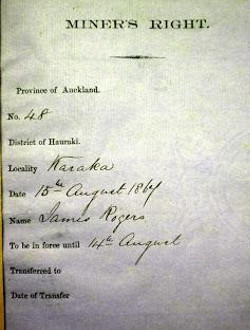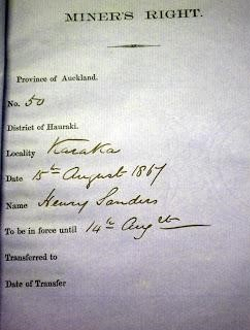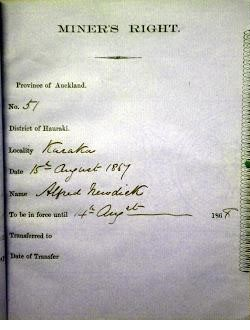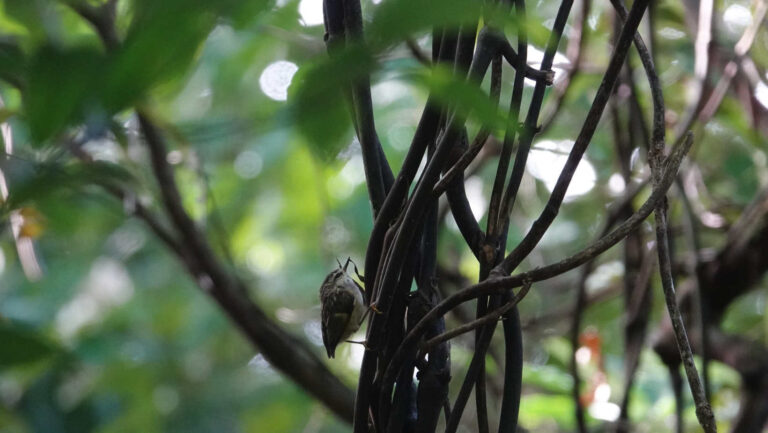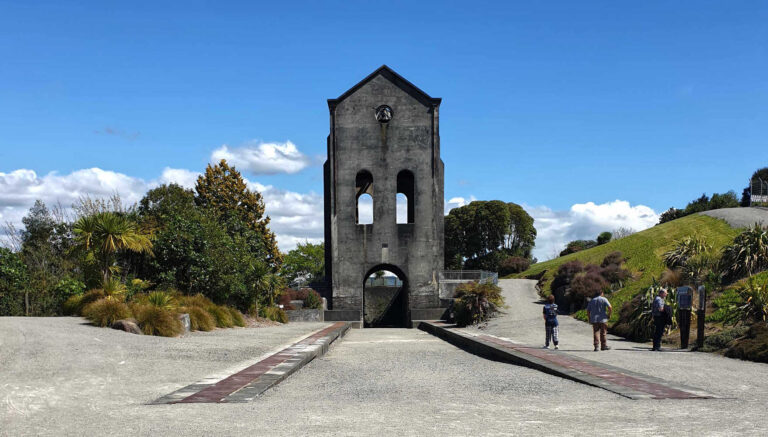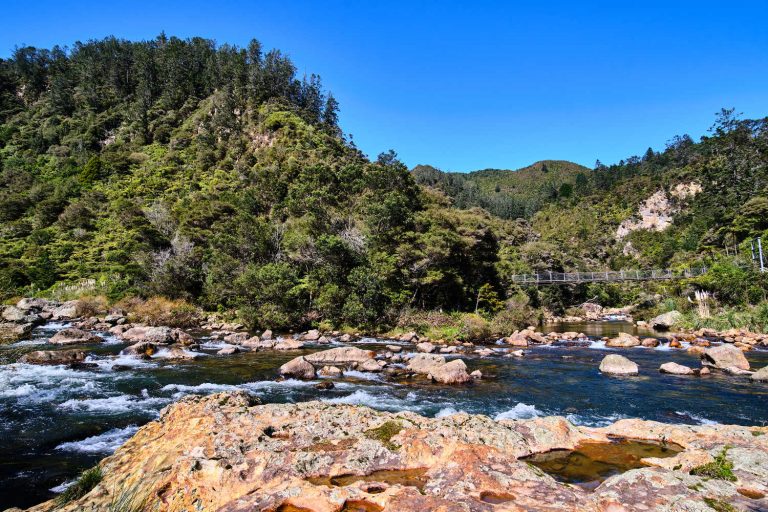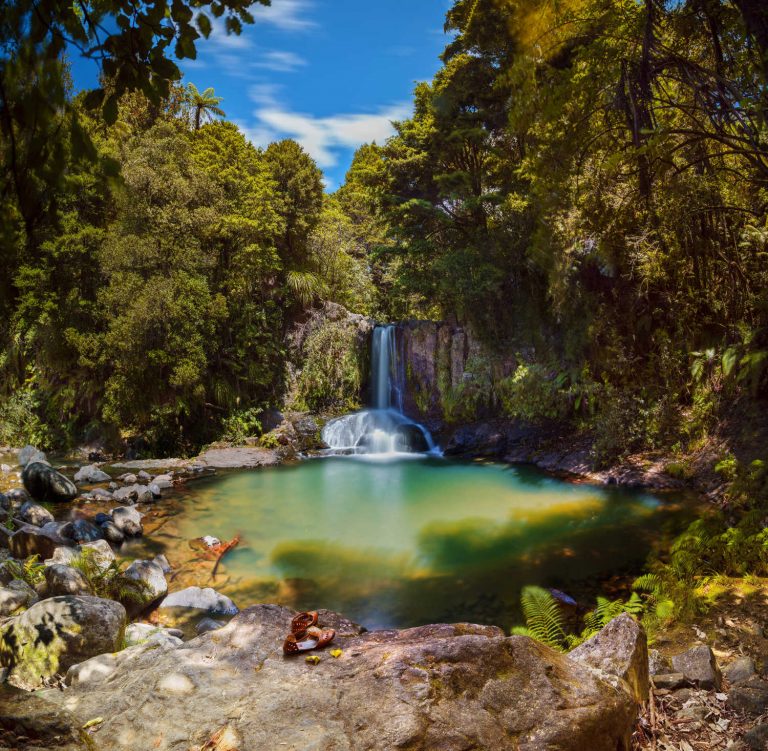Have you thought about stopping in Thames, and I don’t mean just visiting the public toilet? The town is not the prettiest in the Coromandel, it does not have numerous picturesque beaches on its doorstep or quirky railways circumnavigating a spectacular pottery creation yet it is worth a stop or even an overnight stay.
The town is part and parcel of the history of nineteenth century gold mining and timber (Kauri) logging. Due to a decline in gold mining and cessation of timber production the town’s nineteenth century buildings have withstood wholesale destruction. The town’s urban landscape is the story of New Zealand’s urban development with all the layers clearly visible.
For other trips and holiday inspiration check out Auckland Road Trips.
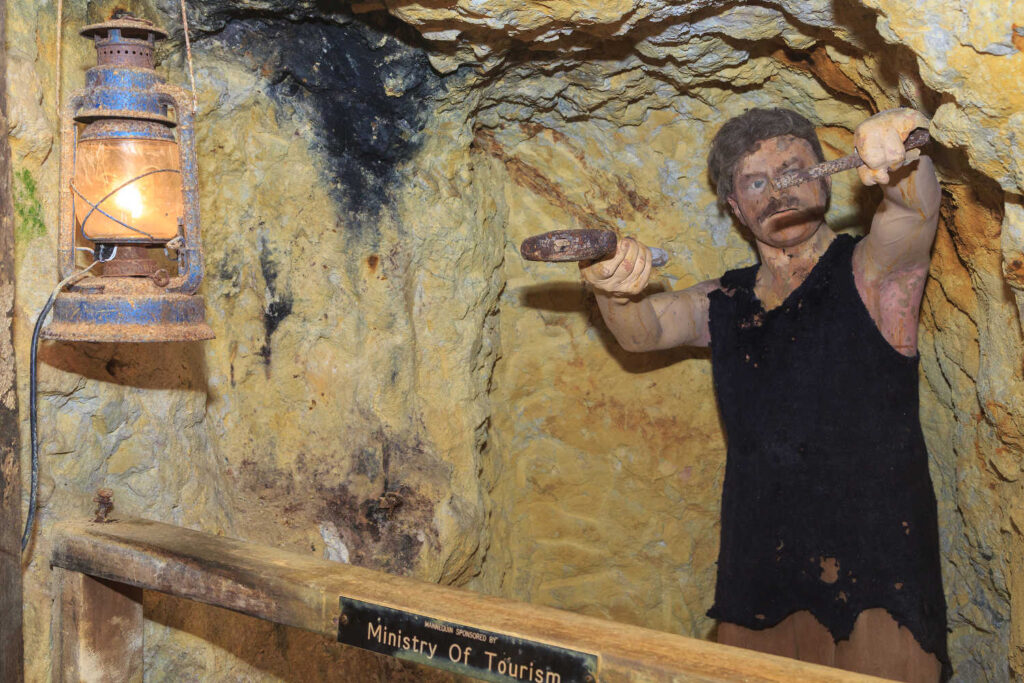
Thames Goldmine Experience, a tourist attraction in the old gold mining town of Thames
-
Thames Gold Mine
Thames Gold Mine is fabulous, an authentic, actual stamp battery where a button is pushed and the monstrosity heaves itself into life, shakes its enormous timber frame and starts crushing, stamping the rocks into very small pieces.
The noise is fabulous, it is industrial and nineteenth century in tone and tenor. And the town had over 40 of these monsters going day and night. The din, the pollution, the dust must have been life threatening, all for the pleasure of extracting gold.
A historic gold mine is usually a sanitised visit without the blood, sweat and tears being part of the display. Old pieces of equipment, dusted artefacts, black & white photographs of distant looking people gazing into a horizon of dreams, swept rooms and very little of the clamour, the dust and sheer scale of equipment is evident.
And as a bonus you get to tour the original gold mining tunnels that riddle the hillsides of Thames and the outlying district. The guided tour is highly recommended, an enthusiastic volunteer will turn on the stamp battery, guide you through the gold excavation tunnels and chat about the perils of extracting gold from the crushed rock using liquid mercury.
The Thames Gold Mine is ‘untidy’ there is machinery everywhere, it is real, it is noisy when the stamp battery is turned on and it is memorizing as a place where the dreams of many were crushed into rock slivers in the battery.
Hours:
- Open 10am-4pm in Summer.
- Weekends and school holidays at least 10am-1pm in the Winter.
- Booked tours for 10 or more at any time.
-
Thames School of Mines & Mineralogical Museum
Thames School of Mines & Mineralogical Museum is a repository of information about the nineteenth century gold fever that struck Coromandel.
There are artefacts, documents, records, photographs and exhibits of the period. For any researcher interested in the period a must visit destination. The Mineralogical Museum is located at the Thames School of Mines and it holds one of the best collections in the Southern Hemisphere. With over 3000 specimens at the museum, including fossils from New Zealand and abroad, this museum is definitely worth a visit. Guided tours bring this special place to life with captivating stories about the Hauraki area’s people and places.
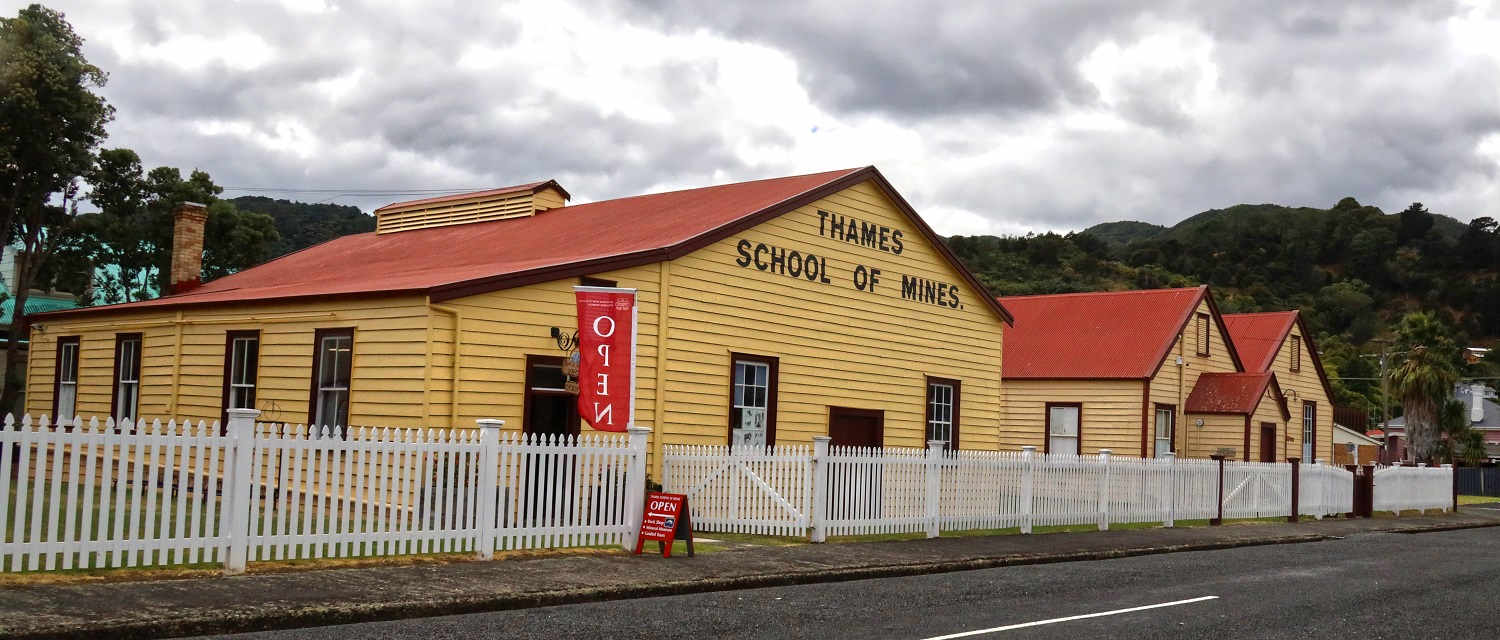
Thames School of Mines
Unforgettable experience!
Your BBQ is now gourmet with a little help from friends
Find Out More
Savour & Spice
 Savour & Spice
Savour & Spice
 Savour & Spice
Savour & Spice
 Savour & Spice
Savour & Spice
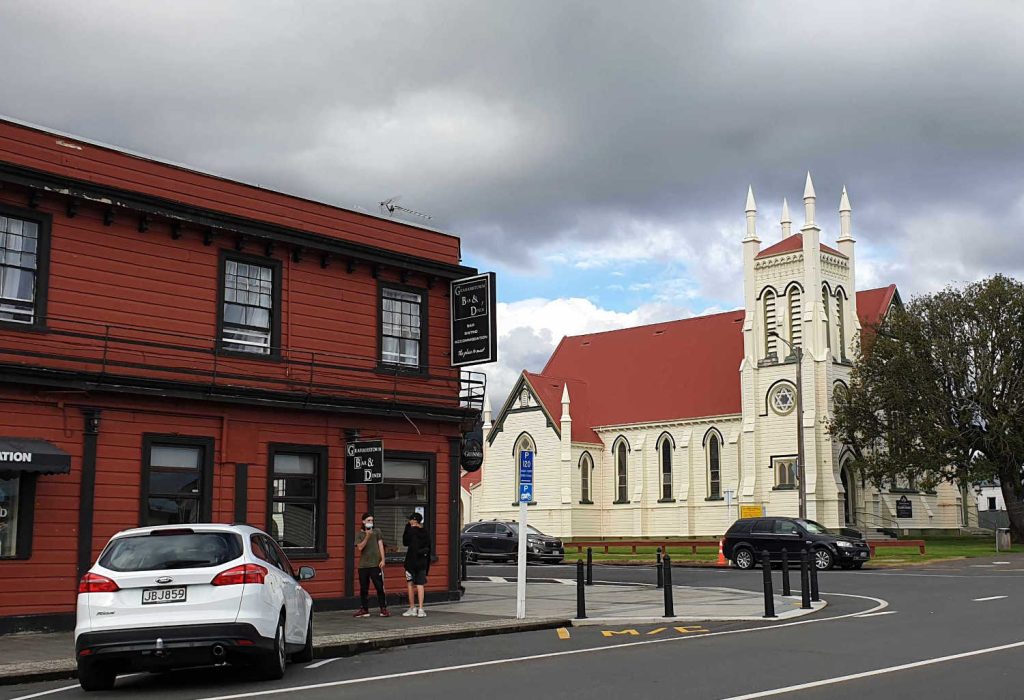
Thames main street
-
Thames High Street
An eclectic mixture of original nineteenth century facades with 1970’s modifications lace the high street.
An eclectic mixture of original nineteenth century facades with 1970’s modifications lace the high street. It is an accurate representation of a high street that has lived through the boom and bust of gold mining. For those interested in heritage trails, check out the accompanying brochure in the travel pack information as well as snippets of historical research and enjoy the day pottering around Thames looking at the past through a contemporary lens.
-
The Treasury
The Treasury Carnegie’s original library now houses The Treasury, a research and family history centre.
A purpose-built regional archive has been built alongside to preserve early records in the best possible conditions. The Trust collects, preserves and promotes the history and stories of the people and places in the Thames, Coromandel and Hauraki region – a region which played a big part in the early development of New Zealand.
The Treasury is home to original documents relating to newspapers, publications, business documents, miners settlement and miners rights claims, documents relating to goldmines, batteries and mining companies. Included is the goldminers database, database is an index to original records of people and companies mining in New Zealand during the period 1861 to 1872.
Visitors can discover if their ancestor was part of the 1867-1872 gold rush to Thames. They will also find out exact dates and the location of the claim. There are lists of local Boer War servicemen, local WWI servicemen. For researchers an appointment is necessary.
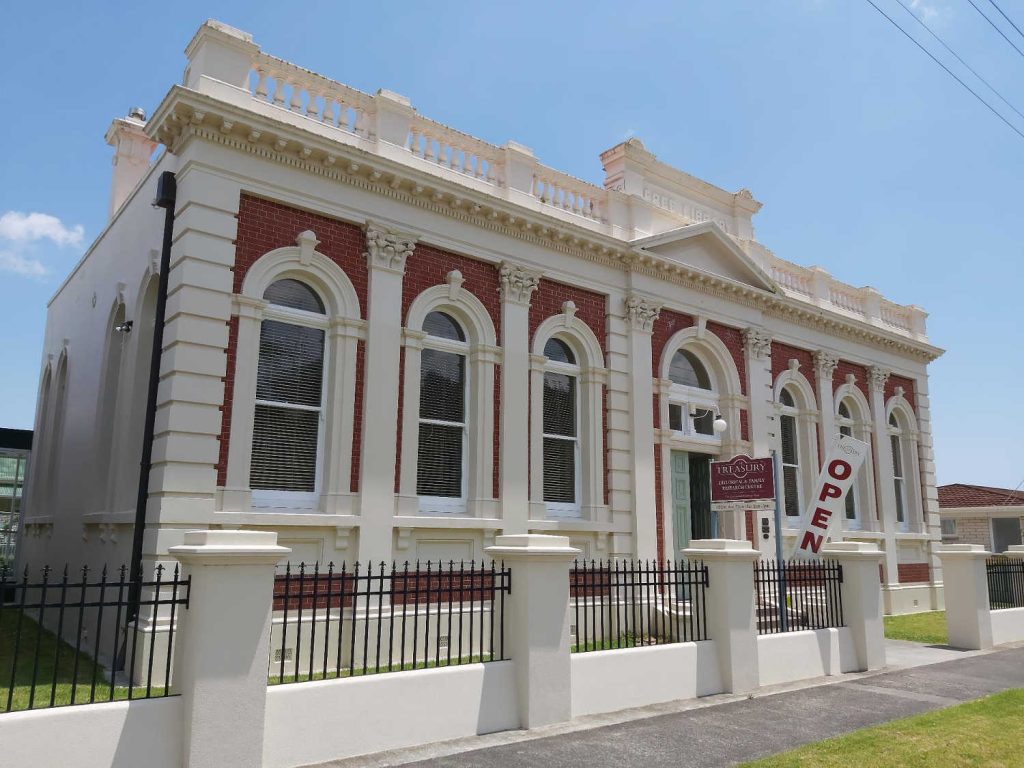
@TheTreasuryThames
-
Art Galleries Nau Mai Haere Mai
Girasol Studio NZ is a self-funded artspace, online resource and independent advocate for Hauraki Coromandel Community Artists – a window to our lifestyle for the global village. A wing of the historic Coromandel Hospital became a hub for working Artists during this year’s Open Studios / Coromandel Arts Tour.
Within the building female Artists gave visitors a gentle reminder that this spirited township is a creative community that nurtures craft and art. The generous support of Lenny Williams and Patukirikiri Iwi made this under utilized space available for use.
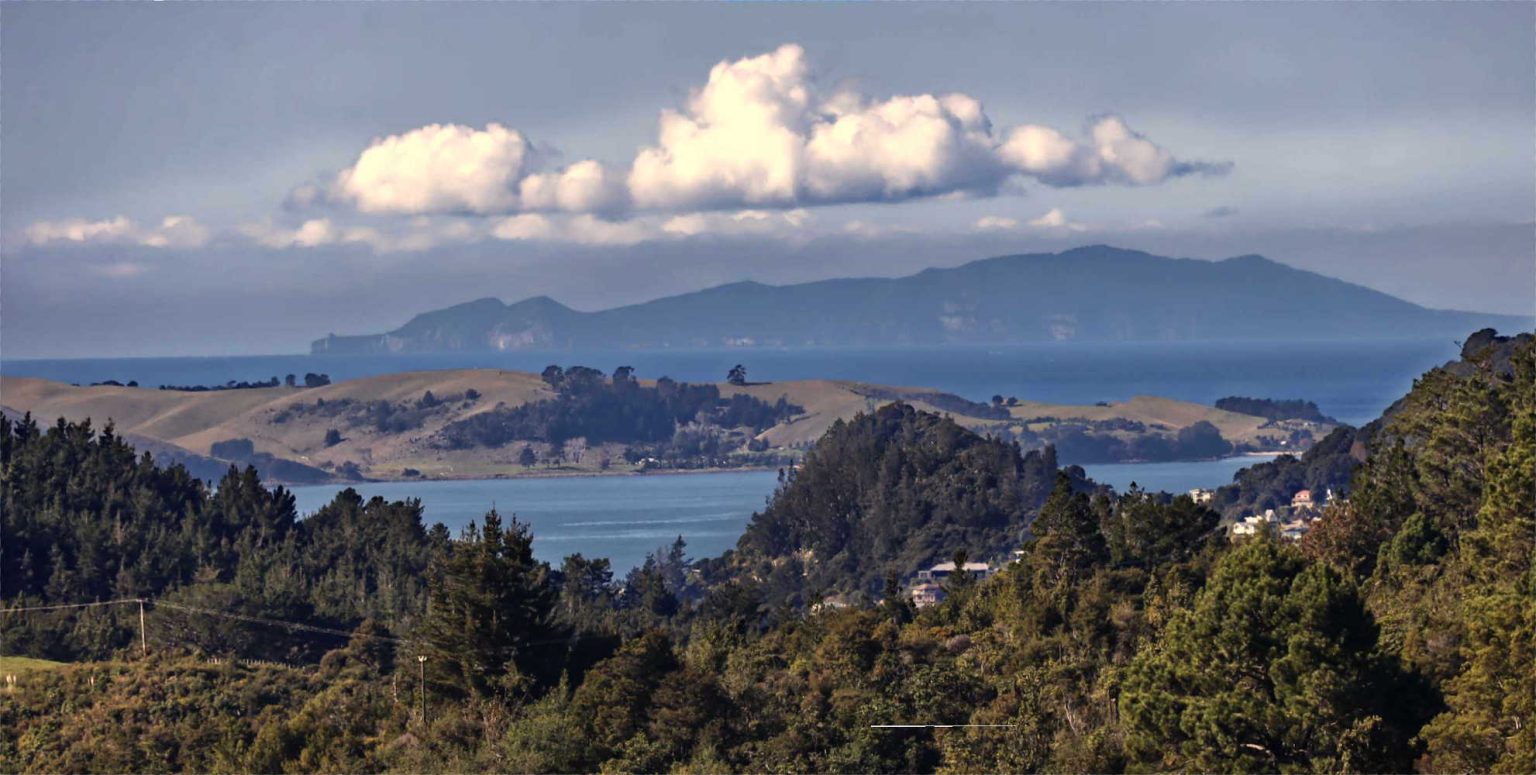
Whitianga to Thames lookout point
-
Thames Coastal Walkway
Stroll Or Cycle Along The Thames Coastal Walkway.
As you can see, there is no lack of walks in Thames. If you prefer to be beside the sea, then choose the Thames Coastal Walkway. This 3-hour return walk goes between The Wharf to Kuranui Bay.
Highlights of the walk include Karaka Bird Hide, a small railway track leading to the original Grahams town Station, Victoria Park and the 1902 Boer War Memorial, Kuranui Bay Reserve with a barbecue area. This is the Hauraki Rail Trail Cycling Section A.
-
Kopu Bridge
Historic Kopu Bridge was built in 1928 and has Heritage NZ’s highest possible ranking for a historic place, Category 1. The bridge is unique as it is the longest single lane bridge in NZ and also the last remaining operational swing bridge in NZ.
The centre span of the bridge where the Pilot house is located, swings open to allow boats through. In its heyday, when the river was a highway for paddle steamers, goods and sand barges, many boats a day passed through the swing span. Boat captains signalled their need for the bridge to open to the Bridge Pilot by blowing their horn.
Being a Bridge Pilot was a full time job, with the pilot and family living nearby, constantly listening and scanning the river for boats. However in recent years, river traffic has significantly reduced with the bridge only being opened 0-3 times in any one year.
The bridge was closed in 2011 when the new two lane Kopu Bridge opened. Before this, the old single lane bridge carried over 9000 vehicles per day, including heavy trucks. The 453 metre one way bridge, was controlled in later years by traffic lights at both ends, so only one direction could go at a time.
In earlier days when there were less vehicles, passing bays on the bridge helped drivers to negotiate the crossing.
The local community has formed the Historic Kopu Bridge Society and a Trust which is currently seeking ownership from NZTA. The Trust intends to restore and open the bridge again as a historic pedestrian and cycleway.
For more information view savekopubridge.
Although currently closed, the bridge may be viewed from Hauraki Railtrail, Kopu, or from the new Kopu Bridge.
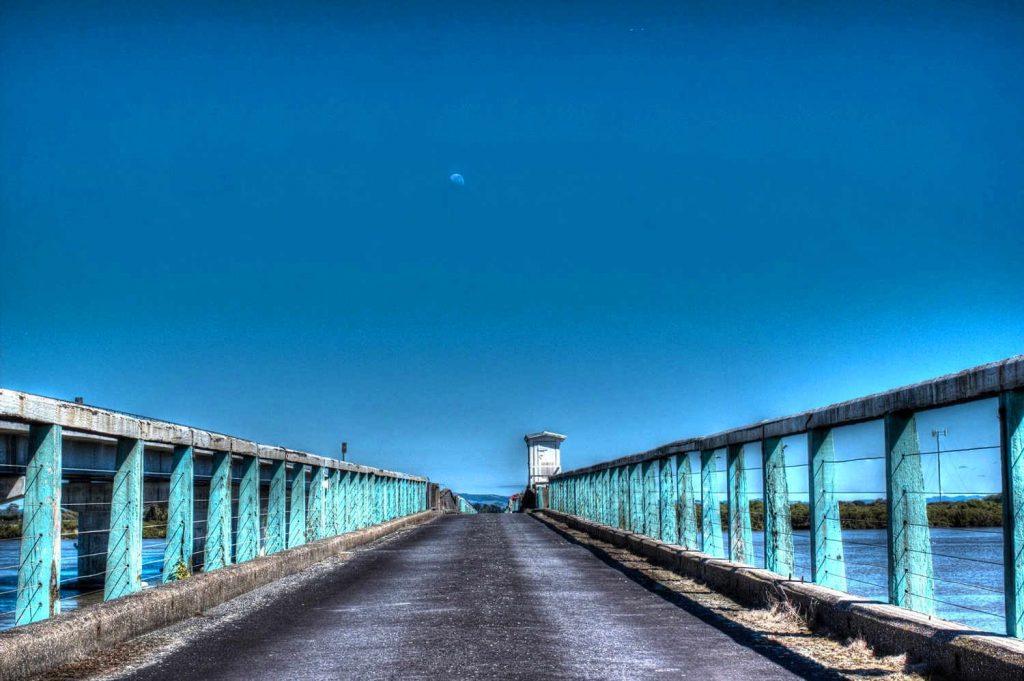
@Historic Kopu Bridge
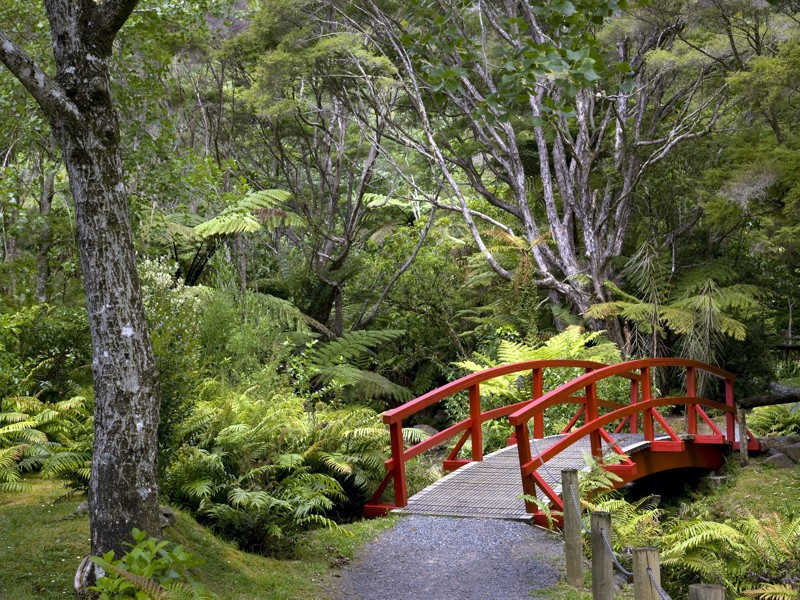
@Rapaura Watergardens
-
Rapaura Watergardens
Rapaura Watergardens Awarded ‘Garden of Significance’ by the New Zealand Gardens Trust.
Rapaura presents visitors with New Zealand’s nature. Experience the natural bush walk to the ‘Seven Stairs to Heaven’. Rapaura Watergardens are open to the public every day except Christmas Day. There is a cafe and picnic areas within the gardens. Dogs are not allowed.
-
The Crown Princess mine
Former Saxon Mine Shaft The Crown Princess mine was the first to operate on this site, beginning in 1871, before it became known as the Saxon.
The Saxon Mine Shaft building serves to protect a 415ft vertical old gold mining shaft. In 1889 this mine, the Saxon Shaft, was developed from the old Crown Princess shaft off Albert Street working gold-producing reefs which ran under the streets of the town. Seventy men were employed and in the first year obtained 7683 ounces of gold produced from 8200 tons of ore. In 1890, 8771 ounces were extracted from 14550 tons of ore. Saxton Shaft & Pump Station – New Zealand Historic Places.
Location: Pollen Street, Thames, New Zealand
-
Canyonz Adventures
Adrenaline pumping adventures are often part of the holiday experience and Canyonz will not disappoint.
Canyonz is a premier adventure operator based in the Thames district. North Island guided canyoning trips through some of the most beautiful landscapes New Zealand has to offer. Packages for Canyonz rock abseiling, water rock sliding, rappelling down cliffs, ziplining and generally challenging yourself to explore the inner mountaineer spirit in yourself.
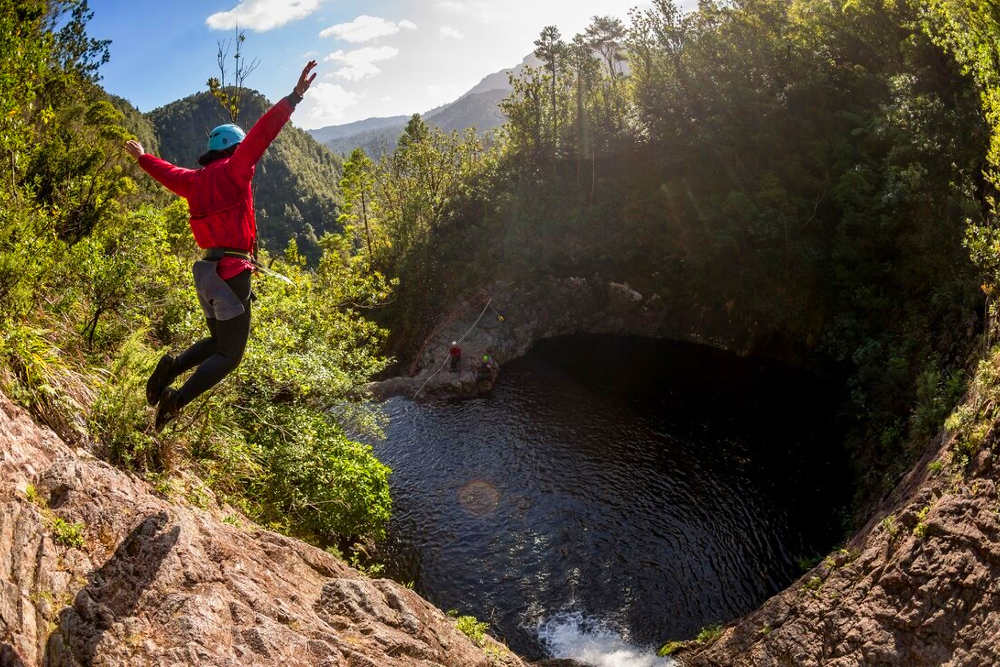
@canyonz
Getting to top 10 places to see around Thames
AFFILIATE PARTNER STATEMENT
Our editors independently visit tour operators, purchase tickets, pay for accommodation, and rate products and places. We are not paid to go on a tour or visit a place. We only make money if you decide to purchase a product through our website links. You will not pay any extra, that is guaranteed.
We promise to never accept free products from manufacturers in return for boosting their products. Our independence and reviews is funded by your purchases and affiliate commissions, at no additional cost to yourself… read more about our affiliate programme in the terms and conditions HERE.
TRAVEL PACK INFORMATION
Thames (NZ): 150 Years Ago – Miner’s Rights
A place to discuss genealogy and history related resources for Thames, New Zealand. A place for Thamesites, to visit and remember The Thames of old, the golden town that many of our ancestors called home. NB.2020 (c) Althea Barker. It is illegal to take information without attribution, including photographs (if source not named they are my personal collection). Please DO NOT take photos and alter in any way
Thames (NZ): 150 Years Ago – Miner’s Rights
Have you got your Miner’s Right? Well, 150 years ago you paid one pound for a Miner’s Right that legally allowed you to mine a chosen section of land. On behalf of the Government, James Mackay (Gold Commissioner) had negotiated with local Maori to allow prospectors to mine certain blocks of land in the Kauaeranga area.
“Each miner’s right allowed one man to claim an area 50 feet by 300 feet and claims were usually marked by the number of mens claims it represented.” (Goldrush to the Thames New Zealand 1867 to 1869″ by Kae Lewis)
Men would usually join together to enlarge their claim land size, and hopefully increase the chance of success. The claim area would then be referred to by the number involved – for instance ‘five men’s ground’.
The New Zealand Herald 9th August 1867 reported that there were about 75 men on the field and that several had already taken out a ‘right’.
One hundred and fifty years ago on 15 August 1867, James Rogers (MR 48), Charles Snowden (MR 49), Henry Sanders (MR 50), and Alfred Newdick (MR 51) were all issued with their Miner’s Right. They were to be in force until 14th August 1868. (Copies from Miner’s Rights Butt Book at Auckland Archives below).
Thames Te Ara Encyclopedia entry on Thames follows.
Thames
Thames is Hauraki–Coromandel’s largest town and the gateway to the Coromandel Peninsula. It had a 2013 population of 6,693, and is 115 km south-east of Auckland and 104 km north-east of Hamilton.
Gold town
Thames came into existence when gold was discovered in 1867 in the lower Kauaeranga valley, at the south-east corner of the Firth of Thames. The goldfield lifted Auckland out of the economic depression that followed the withdrawal of imperial troops and transfer of the colony’s capital to Wellington in 1865.
The government chose Shortland, at the mouth of the Kauaeranga River, for the town. Meanwhile, many miners occupied Tookeys Flat on the Kuranui Stream, in order to be close to the gold workings. In 1868 Auckland entrepreneur Robert Graham purchased the land in between, which became Grahamstown. The three towns combined to form Thames. The town’s centre of gravity soon shifted from Shortland to Grahamstown, which had ‘Scrip Corner’ (where share brokers congregated), the wharves and foundries.
Tararū, a suburban area to the north of the town, was also first laid out in 1868. Tōtara pā cemetery, to the south of the town, is on the site of the former Te Tōtara pā.
Thames has retained a wealth of historical buildings from the gold-mining days thanks to limited pressures for development subsequently, and local pride in the town’s history. The Thames School of Mines, in existence between 1886 and 1953, and mineral museum are open to the public as a museum.
Industrial town
Until recently, Thames was the most highly industrialised town of its size in New Zealand. Two foundries set up business in the town to supply the gold-mining and timber industries: Charles Judd in 1869 and A. & G. Price in 1870. They made stamper equipment, timber jacks and even bush locomotives.
Iron horses from Thames, By 1958 A. & G. Price had built 123 locomotives for the Railways Department, of which 106 were still in service.
Decline in these two industries and the completion of Thames’s rail link with the rest of the North Island in 1898 prompted A. & G. Price to start building locomotives for the Railways Department in 1905. They produced more locomotives for New Zealand than any other workshop, their last one being made in 1965. The company was still in business in 2010.
In 1964 motor-vehicle assembly began in Thames, providing up to 600 jobs. The plant turned out close to 250,000 vehicles before closing down in 1998.
Kauaeranga valley
A major catchment of the Coromandel Peninsula located inland from Thames. This part of Coromandel Forest Park is much used by school groups and summer visitors. It is an area of deep ravines and high peaks.
The kauri in the Kauaeranga valley was heavily worked by bushmen in the 1910s and 1920s. They built more than 50 dams on the river’s tributaries. Booms were located about halfway down the valley to protect farmland. From there an 18-km tramway bypassed the lower section of the river to Kōpū.
The remains of logging dams, tramways, trestle bridges and river booms from that era can still be seen.
Thames coast
The coast north of Thames is characterised by many pōhutukawa, which make a magnificent sight when they flower in December.
Significant areas of flat land are only found on the coast at the mouths of the Te Puru, Waiomu, Tapu and Waikawau streams.
Thornton Bay, 10 km north of Thames, is a beach settlement. Nearby Ngārimu Bay, is named after 2nd Lieutenant Moananui-a-Kiwa Ngārimu, who was posthumously awarded a Victoria Cross in 1943.
Te Puru, 12 km north of Thames on State Highway 25, was subdivided in the 1950s. It was built on stream-mouth alluvial deposits. Gold workings in the area were unsuccessful.
John Logan Campbell, who is best-known as an early Auckland settler, spent three months at Waiomu before he shifted to Waitematā. The Monowai quartz reef up the Waiomu Valley was mined until the 1930s. Waiomu is now known for its domain, with a reclining pōhutukawa, and a kauri-grove walk.
Tapu
Tapu, 19 km north of Thames on State Highway 25, was the earliest coastal township; 500 miners were digging in the Tapu valley by 1869. Much of the gold could be sluiced from hillsides, as it was not buried in quartz as elsewhere on the peninsula, but there was also quartz-reef mining.
The school dates from 1877 and the war memorial hall from 1948–49.
BEST BITS TRAVEL GUIDE
Best Bits travel guide is published by nzjane.com. Owned and managed by PacificJane Ltd.














